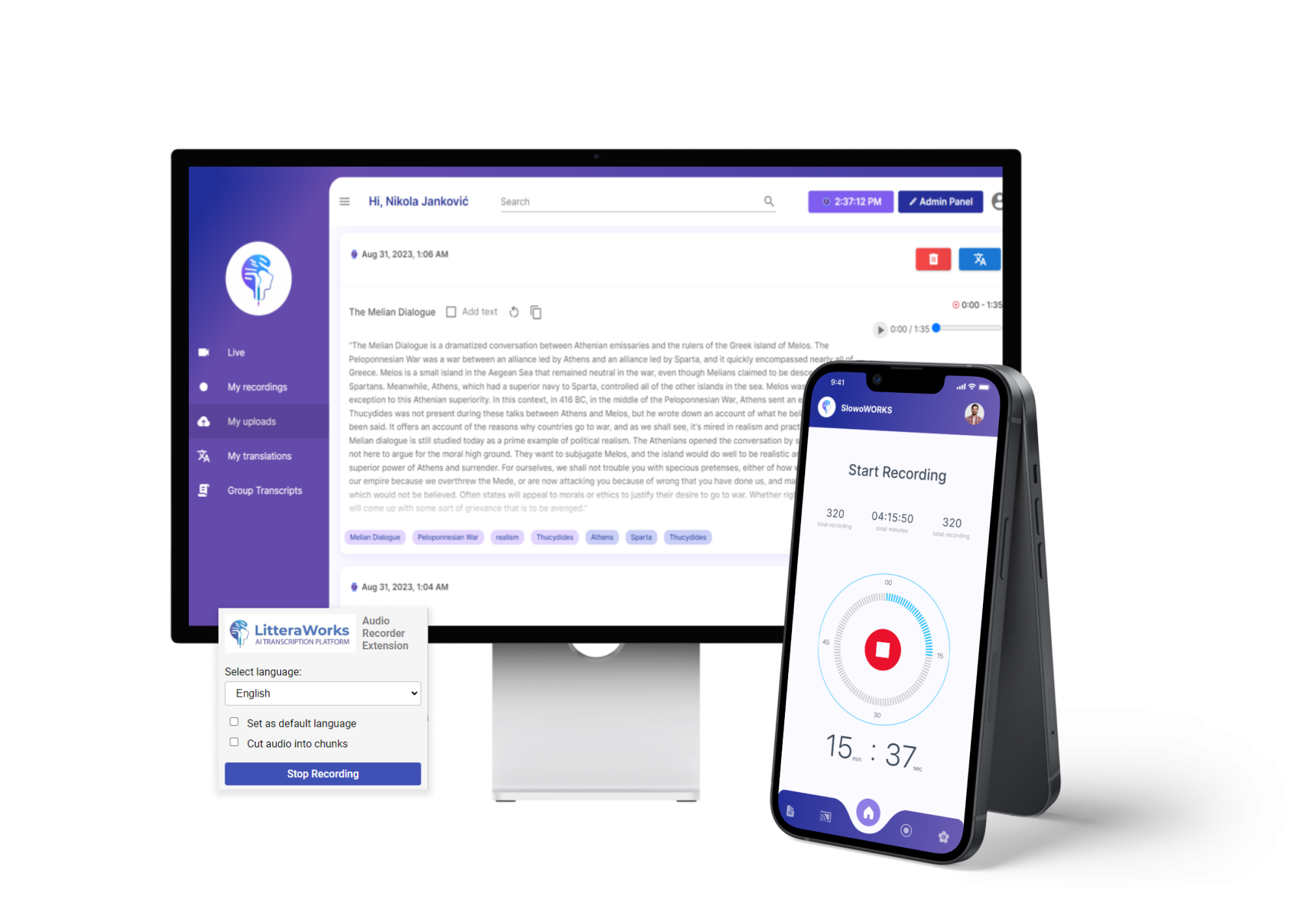
Doing interviews in 2023: How automated transcriptions enhance efficiency for media companies
In the fast rhythm of the media industry, matching the influx of information proves a complex task. Nowhere is this complexity more evident than in the task of transcribing interviews.
Converting spoken words into writing is an essential aspect of any media outlet's operations, from press briefings to sit-downs. The traditional transcribing approach has long been regarded as a hardship, frequently resulting in bottlenecks in the whole content production process. However, as technology penetrates more and more areas of our life, it tends to simplify this complex work.
The traditional transcription process
Transcribing an interview has always been a labour-intensive process. A journalist or a dedicated transcriptionist would sit down with a recording, carefully listen to it, and write down the contents with care. An hour of recorded information might need four to six hours of human transcription, greatly slowing the rate at which an interview can be converted from recording to a publishable or broadcast-ready piece. Engaging third-party transcription services could potentially alleviate some of this burden, but this will include costs, which can quickly accumulate.
This traditional approach to transcription is not merely resource-heavy but is also one of the most boring parts of the journalists' work and generates a lag in the content production cycle.
AI-powered transcriptions - now also for smaller languages
With the arrival of powerful artificial intelligence models in 2023, automated transcribing systems will soon become an indispensable instrument in the media arsenal. These solutions effectively transcribe voice-to-text, utilizing advanced AI technology, drastically decreasing the time and resources traditionally required. In addition, unlike prior technologies, which were primarily focused on English, contemporary models include a variety of smaller languages, increasing their applicability in worldwide media sources.
Automated transcriptions have transformed the dynamics of interview transcriptions, providing a rapid turnaround time that adds to the editorial process's acceleration. Consider this: an hour-long discussion may be transcribed in about 10 minutes. This quick turnaround guarantees that editors may examine and fine-tune the material as soon as possible, making quick, responsive content production a reality.
Benefits beyond speed and cost: Accuracy, Accessibility, and Archiving
While speed is an important benefit of automated transcriptions, these platforms also retain a high level of accuracy. Instead of spending time retyping the content, the editor or journalist will focus on improving the text resulting not only in quicker transcription but also a more reliable and better-read text.
Automated transcription also makes it simple to create subtitles for video material, increasing its reach and accessibility to a larger audience. Then there's the advantage of archiving. Automated transcriptions provide a digital database of all transcribed text that is easily searchable. This archive may be a great resource for fact-checking, reviewing previous information, and even finding connections between various pieces of content.
LitteraWorks as a possible solution
The future of media transcription is bright, with continued advances in AI and machine learning promising even greater capabilities. Language recognition will develop further, particularly for dialects and lesser-used languages. Improved voice recognition might result in more complex transcriptions that capture the emotion and tone of the speech as well as the words spoken.
In the meantime, we have built a platform that is already used by various media companies - be it online portals, TV stations, newspapers or news agencies, all of them are streamlining the processes and making their editors more efficient. Some of these companies are using languages spoken by hundreds of millions, but there are also those in a 2 million native speakers country, who are confirming that the platform can work very well even in these scenarios.
More info on: www.litteraworks.com.
If media businesses continue to incorporate automated transcription into their operations, workflows may become more efficient, and the ability to offer high-quality material in real time may improve. If you want to try out how it would work for you, contact us for a free demo!
